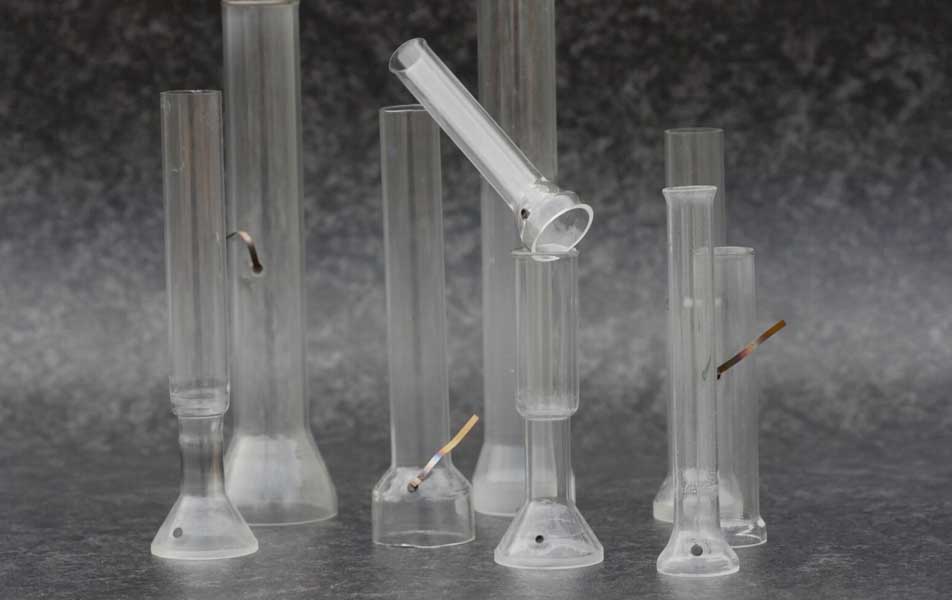A Cathode Ray Tube (CRT) is a device used to produce cathode rays within a vacuum tube. The device accelerates the rays through a magnetic, electrical field to create images on a fluorescent screen.
The earliest CRTs were developed in 1897 by German physicist Ferdinand Braun. Called the Braun Tube, these early CRTs employed a cold cathode for working, using a phosphor-coated mica screen and a diaphragm to create a visible dot. Braun later went on to invent the cathode ray tube oscilloscope, also known as Braun’s Electrometer.
In the early 1900s, cathode ray tubes used cold cathodes. But a hot cathode was developed by John b. Johnson and Harry Weiner Weinhart of Western Electric. These hot cathodes used a thin filament heated to an extremely high temperature by passing electricity through it.
Commercial CRTs date back to 1934 when German company Telefunken used them to develop radio and television technology. This technology was used in large-scale manufacturing of television sets right up to around the year 2000 when the development of Liquid Crystal Display, Light Emitting Diode and Plasma TVs took over.
Cathode ray tube displays for Medical Imaging
For decades, the cathode-ray tube has been at the heart of medical imaging displays. The images produced are used for medical diagnosis in which the patient doesn’t have to undergo any painful, physically intrusive diagnostic tests to find out what is wrong with them.
Medical imaging equipment using CRT technology produces easily readable, high-resolution images that allow doctors to diagnose medical conditions quickly and accurately.
After CRT technology was used to display television images in 1929, CRT imaging applications were further refined and improved and adopted by the medical profession because of the diagnostic and treatment advantages it offered.
Are CRTs still manufactured and used today? Yes!
Vacuum tube industry manufacturers, such as Moore’s Glassworks, continue to serve many needs across a wide range of industries.
Cathode ray tube technologies are used in many products and industries, such as:
· Commercial and industrial heating
· Communications: microwave, travelling wave, and high-power amplifier tubes
· Lighting: incandescent, fluorescent, and high-power arc lamps
· Medical Testing: x-ray tubes

Cathode Ray Tube Manufacture Process
Should we still maintain and use CRTs? Yes!
The science and technology behind CRTs are sound. CRTs are tried, tested and proven across many different applications. Their decades-long use, effectiveness and efficiency mean that investing in CRT technology is a reliable and trustworthy choice.
Some of the advantages CRTs have over other solutions include:
· Availability and accessibility. Moore’s Glassworks offer a flexible service with a quick turnaround
· Cost-effectiveness. Their high-quality raw material components offer great value for money
· Eco-friendly materials. For businesses looking to reduce their carbon footprint, it is easy to refurbish, reuse, recycle, and avoid waste
· Proven performance and reliability. When you need a technology you can rely on; there is no need to try more costly and unproven alternatives
CRT maintenance and upkeep
Over the lifetime of CRT technology, the phosphor coating will wear down, causing some loss in functionality. Refreshing the phosphor is a normal part of maintaining your CRTs, and there are various types of phosphor coating that are suitable depending on your needs and how you use your CRTs.
It is best to discuss your CRT needs directly with our team at Moore’s Glassworks. We can help you with the best choice of CRT for your application.
Investing in CRTs is a safe bet because the technology has been around for decades and is set to be still a practical choice for many more years to come! Our company uses world-class, high-technology manufacturing processes with outstanding Quality Assurance testing to deliver precision products across a wide variety of industries and applications.

Cathode Ray Tubes
Want to know about the way Moores Glass manufacture CRT casings? Visit our cathode ray tube page for more information or check out our blogs on the story and manufacture of cathode ray tubes.

Leave a Reply